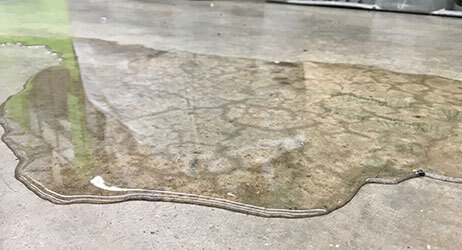Accidents can happen anywhere, including the workplace. One common cause of workplace accidents is wet or slick floors. These hazardous conditions can lead to slips, trips, and falls, resulting in injuries and sometimes even lawsuits. When it comes to determining liability for wet or slick floors at the workplace, it can be a complex issue.
The Employer’s Duty
Employers are required by state legislation to offer a secure workplace for their workers. This obligation includes making sure that there are no workplace risks that may be anticipated with reasonable certainty. Wet or slick floors are considered hazardous, and employers must take steps to address this risk.
Employers have a responsibility to:
1.Preventive Measures: Take steps to reduce the possibility of slippery or wet flooring. This can include proper maintenance of flooring materials, prompt repair of leaks or plumbing issues, and regular cleaning routines.
2.Warning Signs: If wet conditions are unavoidable due to the nature of the work, employers should provide adequate warning signs or barriers to alert employees to the potential danger.
3.Training and Education: Ensure that employees are educated and trained in how to identify and respond to wet or slick floors. This may include providing slip-resistant footwear or other personal protective equipment.
4.Timely Cleanup: In situations where wet floors are temporary, employers should ensure that they are promptly cleaned and dried to minimize the risk.
The Employee’s Duty
While employers have a major part to play in ensuring a safe workplace, employees also have a part to play in preventing accidents. Employees should:
1.Be Alert: Workers should exercise caution, especially in areas with damp or slippery flooring.
2.Use Appropriate Footwear: Wear appropriate footwear that provides good traction on slippery surfaces.
3.Report Hazards: Report any wet or slick floor hazards promptly to their supervisors or the appropriate personnel responsible for safety.
Determining Liability
When an accident occurs due to wet or slick floors, liability can be a contentious issue. Depending on the particulars of each situation, liability might change. Here are some factors that can help determine who may be liable:
1.Negligence: Liability often hinges on whether negligence was involved. If an employer or employee failed to take reasonable precautions to prevent a wet or slick floor or did not respond appropriately when the hazard was identified, they may be deemed negligent.
2.Contributory Negligence: Sometimes, both the employer and the employee may share some degree of responsibility for the accident. For example, an employee may have ignored warning signs or failed to wear appropriate footwear. Liability in these circumstances can be split between the parties.
3.Third Parties: In certain situations, third parties, such as maintenance contractors or suppliers of slippery flooring materials, may also be held liable if their actions or products contributed to the hazardous condition.
4.Premises Liability Laws: Liability can be influenced by state-specific premises liability laws. These laws establish the obligation of care that property owners or occupiers have to visitors.
Legal Recourse for Injured Parties
When an employee is injured due to a wet or slick floor at the workplace, they may have legal recourse. This can involve:
1.Workers’ Compensation: In many cases, employees injured at work can file for workers’ compensation benefits, regardless of fault. Which will cover medical bills and missed wages.
2.Personal Injury Lawsuits: If a third party’s negligence or intentional actions caused the accident, the injured employee may have grounds for a personal injury lawsuit to seek compensation for expenditures on healthcare, missed wages, suffering, and other losses.
The issue of liability for wet or slick floors at the workplace is complex and depends on various factors, including negligence, contributory negligence, and state-specific laws. While employers have a duty to maintain a safe environment, employees also play a role in preventing accidents. When accidents do occur, injured parties may have legal options, including workers’ compensation claims and personal injury lawsuits. To minimize the risk of such accidents, both employers and employees should prioritize safety through preventive measures and responsible behavior. Ultimately, creating a safe workplace requires a shared commitment to reducing hazards and promoting employee well-being. If you think you or your loved ones deserve compensation for pain and suffering, then contact now for a free consultation (718) 414-6642.


 Who Is Liable for Wet or Slick Floors at the Workplace?
Who Is Liable for Wet or Slick Floors at the Workplace? 

